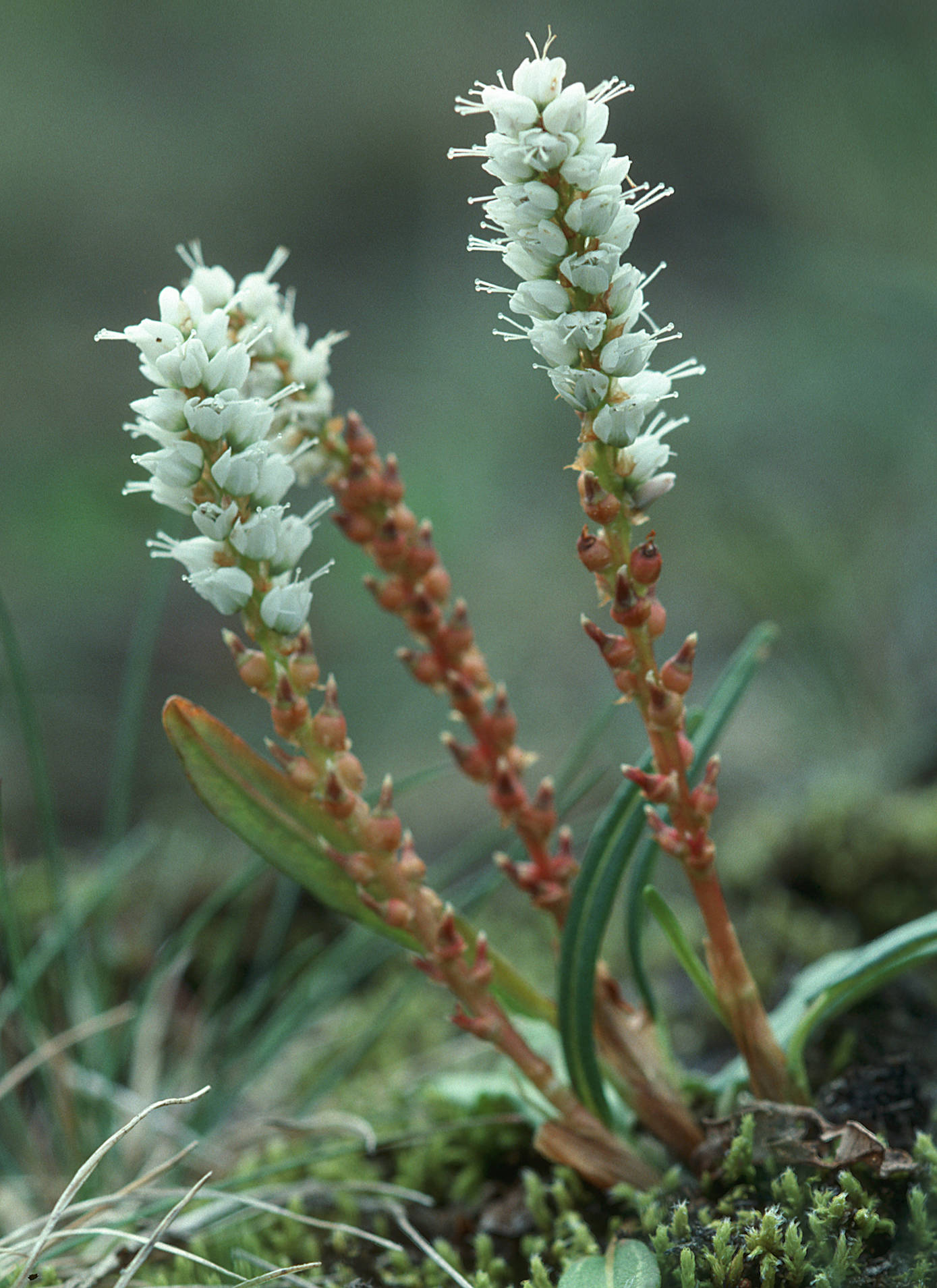On one of many dribbly days in July, as I wandered along a beach on North Douglas, I noticed a little plant with white flowers. It’s called alpine bistort, but at our latitude it also lives in meadows and roadsides at lower elevations. The top of the flowering spike bore small flowers but on the lower part of the spike, where flowers normally develop, there were — not seed capsules or fruits — but small plants.
This is an unusual plant because it does not usually produce seeds. Instead, each flower makes a bulb-like structure, and from this grows a tiny little plant. Eventually, the new plantlet falls off and lands on the ground, ready to grow.
Botanists call this habit “vivipary,” which means live-bearing or bringing forth live young. The scientific name of the plant (Polygonum viviparum) reflects this habit. The little green plantlet has already started to make its own carbohydrates, so in a sense, it is off to a running start when it lands in a suitable spot nearby. In contrast, a seed might wait until next year, or next decade, before it germinates and produces a seedling.
Calling this habit “live-bearing” does not imply that any seeds produced in the more customary way are dead. Seeds are not dead at all. However, being encased in several layers of tissue gives seeds several options not open to these viviparous plantlets. Seeds can go dormant, in some cases for tens or hundreds of years, awaiting the right conditions for germination. The coverings of a seed may be modified in many ways (wings, sticky coatings, prickly surfaces, edible fruits) that give seeds a variety of ways to be transported to new sites, often at some distance from the parent plant. Thus, seeds can often disperse in time (dormancy) and space, but terrestrial viviparous plantlets often cannot. Moreover, seeds of most plants (but not orchids) contain stored carbohydrates packed into the seed by the mother plant, so they can draw on this stored energy when they germinate and start to grow. Viviparous plantlets do it for themselves.
There aren’t many native viviparous plants in our area. In addition to alpine bistort, we have a couple of grasses that are at least sometimes viviparous and the uncommon snow saxifrage. These species (and some others that live elsewhere) form their plantlets asexually — without pollination and fertilization, so each little plant is like its mother. Asexual vivipary is thought to occur most frequently where suitable terrestrial habitats are very patchy or where favorable seasons for germination and early growth are short.
So these plants have been reported mostly from arctic, alpine, or very arid areas.
Elsewhere in the world, however, some viviparous species produce plantlets by sexual reproduction. The flowers are pollinated and seeds develop, but the embryos begin to grow and, in some cases, plantlets sprout while the seed is still on the mother plant. In these species, there is regular genetic mixing across generations and offspring are not virtually identical to their parents. Many of these species live in warm tropical waters. Perhaps the most famous examples are some mangroves, whose fertilized seeds germinate while still on the parent; the whole young plant then drops off and floats to a new site.
Vivipary has evolved many times in the plant kingdom. Although the conditions that might favor the evolution of vivipary have been discussed by botanists, perhaps the only fairly clear conclusion is that different conditions are probably relevant for different species. As so often happens, there emerges no single, simple explanation.
• Mary F. Willson is a retired professor of ecology.

